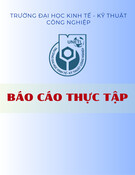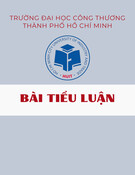
RATE-DISTORTION ANALYSIS AND TRAFFIC MODELING
OF SCALABLE VIDEO CODERS
A Dissertation
by
MIN DAI
Submitted to the Office of Graduate Studies of
Texas A&M University
in partial fulfillment of the requirements for the degree of
DOCTOR OF PHILOSOPHY
December 2004
Major Subject: Electrical Engineering

RATE-DISTORTION ANALYSIS AND TRAFFIC MODELING
OF SCALABLE VIDEO CODERS
A Dissertation
by
MIN DAI
Submitted to Texas A&M University
in partial fulfillment of the requirements
for the degree of
DOCTOR OF PHILOSOPHY
Approved as to style and content by:
Andrew K. Chan
(Co-Chair of Committee) Dmitri Loguinov
(Co-Chair of Committee)
Karen L. Butler-Purry
(Member) Erchin Serpedin
(Member)
Chanan Singh
(Head of Department)
December 2004
Major Subject: Electrical Engineering

iii
ABSTRACT
Rate-Distortion Analysis and Traffic Modeling
of Scalable Video Coders. (December 2004)
Min Dai, B.S., Shanghai Jiao Tong University;
M.S., Shanghai Jiao Tong University
Co–Chairs of Advisory Committee: Dr. Andrew K. Chan
Dr. Dmitri Loguinov
In this work, we focus on two important goals of the transmission of scalable video
over the Internet. The first goal is to provide high quality video to end users and the
second one is to properly design networks and predict network performance for video
transmission based on the characteristics of existing video traffic. Rate-distortion
(R-D) based schemes are often applied to improve and stabilize video quality; how-
ever, the lack of R-D modeling of scalable coders limits their applications in scalable
streaming.
Thus, in the first part of this work, we analyze R-D curves of scalable video
coders and propose a novel operational R-D model. We evaluate and demonstrate
the accuracy of our R-D function in various scalable coders, such as Fine Granular
Scalable (FGS) and Progressive FGS coders. Furthermore, due to the time-constraint
nature of Internet streaming, we propose another operational R-D model, which is
accurate yet with low computational cost, and apply it to streaming applications for
quality control purposes.
The Internet is a changing environment; however, most quality control approaches
only consider constant bit rate (CBR) channels and no specific studies have been con-
ducted for quality control in variable bit rate (VBR) channels. To fill this void, we
examine an asymptotically stable congestion control mechanism and combine it with

iv
our R-D model to present smooth visual quality to end users under various network
conditions.
Our second focus in this work concerns the modeling and analysis of video traffic,
which is crucial to protocol design and efficient network utilization for video trans-
mission. Although scalable video traffic is expected to be an important source for
the Internet, we find that little work has been done on analyzing or modeling it. In
this regard, we develop a frame-level hybrid framework for modeling multi-layer VBR
video traffic. In the proposed framework, the base layer is modeled using a combi-
nation of wavelet and time-domain methods and the enhancement layer is linearly
predicted from the base layer using the cross-layer correlation.

v
To my parents

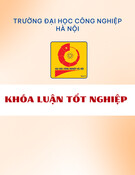




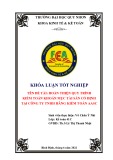
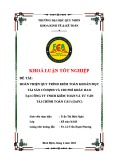

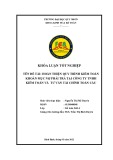
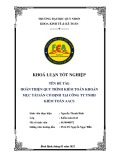
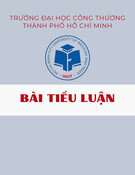

![Thẩm định dự án đầu tư Ngân hàng BIDV: Bài tiểu luận [chuẩn nhất]](https://cdn.tailieu.vn/images/document/thumbnail/2025/20251018/kimphuong1001/135x160/7231760775689.jpg)
